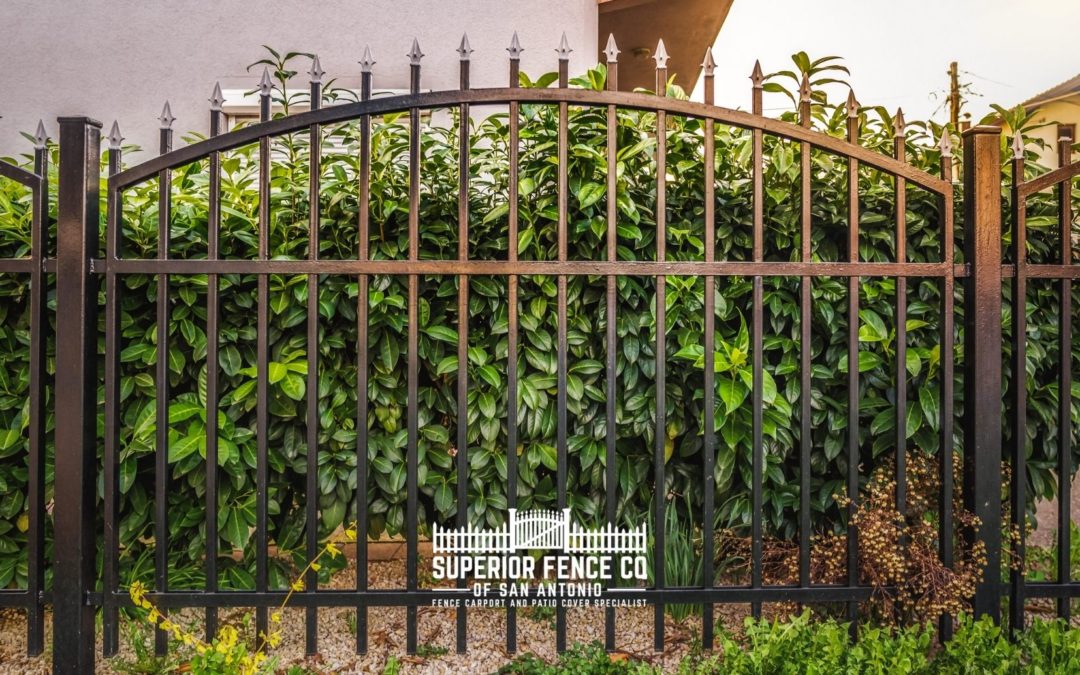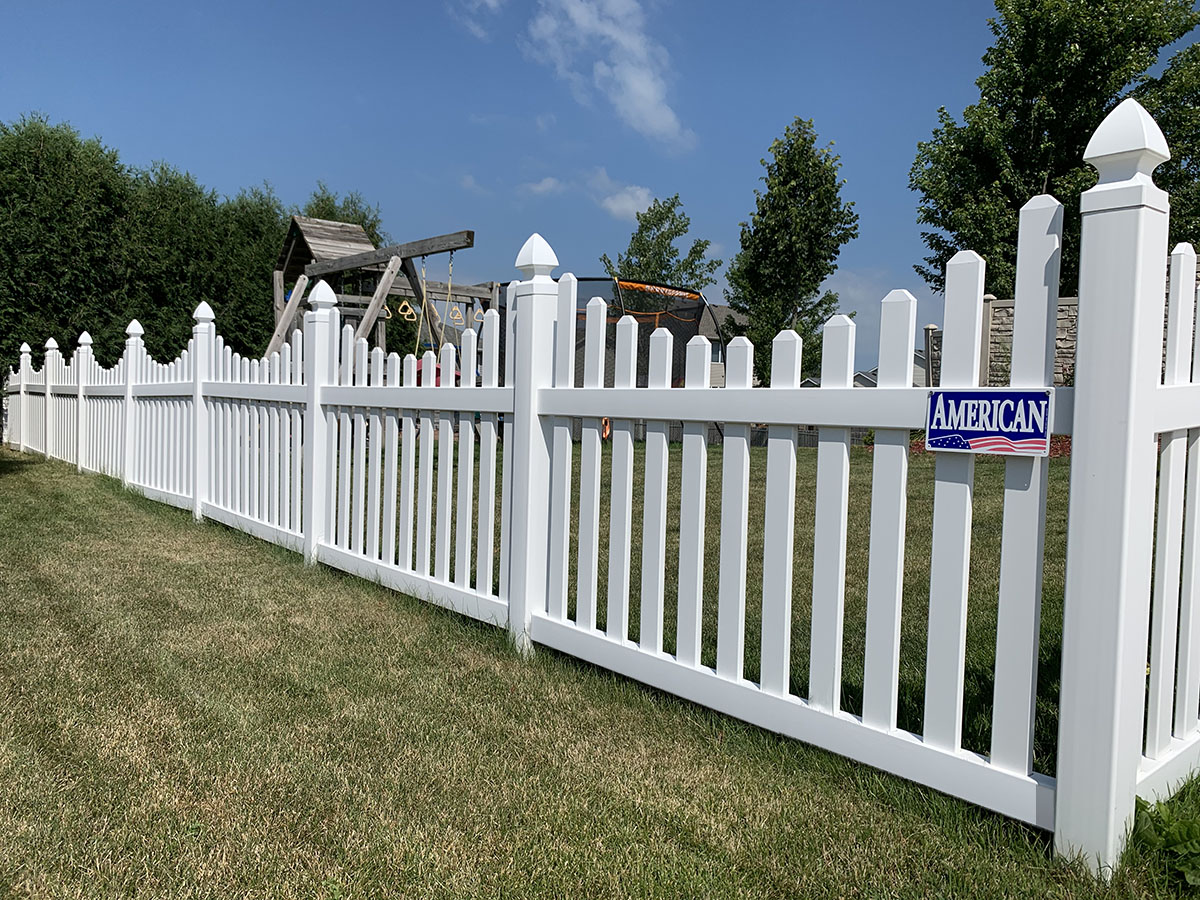All Categories
Featured
As sustainability becomes an increasingly essential element in home and commercial property style, the demand for eco-friendly products continues to rise. This consists of materials for outside spaces, especially for fencings. While conventional fencing options like wood, metal, and vinyl can have considerable environmental drawbacks, there are several sustainable and environment-friendly options offered. Picking ecologically responsible fence materials aids lower your carbon impact and supports preservation initiatives. Allow's explore a few of the ideal eco-friendly fence alternatives that promote sustainability while likewise providing resilience and style.
Conveniences: Bamboo needs minimal water, chemicals, and plant foods to expand. It is naturally degradable, lowering waste at the end of its life cycle. It is resistant and additionally long lasting to rot, making sure longevity with appropriate care. Considerations: Bamboo might not be perfect for locations with severe wintertimes or extreme cool, as it can come to be fragile and crack in freezing temperatures. 2. Recycled Products Fencing. Fencings made from recycled materials, such as post-consumer plastics, recovered timber, or recycled steel, are becoming significantly popular in eco-conscious designs. These products reduce waste, save resources, and reduce the requirement for the extraction of resources, which is beneficial for the environment. By repurposing existing materials, you contribute to lowering the demand for new, energy-intensive production processes.
Advantages: Making use of recycled materials aids draw away waste from garbage dumps, minimizes ecological impact, and can lower your carbon impact. It is additionally an affordable remedy in some cases. Factors to consider: The visual of recycled material fencings can vary, and some may not attain the same natural look as standard wood fencings. Several manufacturers now supply layouts that replicate the look of timber or stone. 3. Compound Fencing. Composite fencing is made from a mix of wood fibers and plastic, frequently sourced from recycled web content. This kind of secure fencing provides the appearance of wood with minimal upkeep, while also being eco-friendly. Compound products are immune and typically resilient to the components, lowering the requirement for constant substitute or therapy with chemicals.
![]()
Benefits: Composite fencings are durable, low-maintenance, and can be made from recycled web content, assisting decrease waste. They do not need unsafe chemicals for conservation, unlike treated timber. Factors to consider: While composite secure fencing is sturdy, it often tends to be a lot more pricey upfront contrasted to conventional timber. Nevertheless, its long life and low maintenance might make it a more cost-efficient alternative over time. 4. Cedar and Redwood Secure Fencing. Cedar and redwood are preferred choices for environmentally-conscious secure fencing, as both products are normally sturdy, resistant to decay, and call for marginal chemical treatments. These timbers can be sustainably gathered from properly taken care of woodlands, ensuring their green status. They additionally have an all-natural appeal that numerous property owners value, with rich shades and textures that boost aesthetic charm.
Perks: Cedar and redwood fences are long-lasting, naturally pest-resistant, and have a low environmental influence when gathered sustainably. They also have a classic aesthetic and can blend perfectly into all-natural landscapes. Considerations: While cedar and redwood are more environment-friendly than other sorts of timber, they are still wood products and need proper upkeep to avoid degeneration. The cost may likewise be greater compared to various other products. 5. Living Fences (Hedges and Hedges) For those looking for an extra natural and eco-friendly choice, living fences, or hedgerows, are a superb selection. These are normally produced by growing dense hedges, trees, or climbing plants to create an all-natural obstacle. Popular choices for living fences include privet, boxwood, and bamboo. These plants not only offer privacy yet likewise take in carbon dioxide, aid with dirt disintegration, and assistance regional wild animals.
Advantages: Living fencings boost air quality, contribute to biodiversity, and use a natural look that mixes effortlessly with the landscape. They likewise reduce environmental pollution and help manage temperature levels in your lawn. Factors to consider: Living fences call for regular upkeep, such as pruning and watering, and might not appropriate for every environment. They also need time to develop prior to they can provide complete privacy. 6. Stone and Block Secure Fencing (Redeemed) Stone and brick are incredibly long lasting products, and making use of reclaimed rock or brick can be an environment-friendly way to create a fencing. By recycling these materials from old structures or frameworks, you reduce the need for new resources and lessen waste. Stone and brick fences are solid, require little maintenance, and supply a classic want to any kind of residential property.
![]()
Benefits: Recovered rock and brick fences are exceptionally durable, low-maintenance, and supply outstanding personal privacy and protection. They are likewise energy-efficient, as they aid control temperature by functioning as natural insulators. Considerations: Installation of stone and block fences can be more pricey and labor-intensive than various other materials. Furthermore, these fences may not appropriate for all residential properties due to the weight and the demand for correct installment. Conclusion. Bamboo, recycled products, composite fencing, and cedar or redwood all supply lasting options to conventional materials. By selecting one of these lasting fence products, you're making a favorable impact on the setting while creating a functional and beautiful outdoor location.
- Bamboo Fence. Bamboo is just one of one of the most environment-friendly materials available for fence. As one of the fastest-growing plants in the globe, bamboo is extremely sustainable, able to grow back promptly after being gathered. Unlike hardwood trees, which can take decades to grow, bamboo reaches complete development in simply a few years, making it an excellent sustainable alternative. Bamboo fences are strong, naturally immune to parasites, and give a lovely, natural visual.
Conveniences: Bamboo needs minimal water, chemicals, and plant foods to expand. It is naturally degradable, lowering waste at the end of its life cycle. It is resistant and additionally long lasting to rot, making sure longevity with appropriate care. Considerations: Bamboo might not be perfect for locations with severe wintertimes or extreme cool, as it can come to be fragile and crack in freezing temperatures. 2. Recycled Products Fencing. Fencings made from recycled materials, such as post-consumer plastics, recovered timber, or recycled steel, are becoming significantly popular in eco-conscious designs. These products reduce waste, save resources, and reduce the requirement for the extraction of resources, which is beneficial for the environment. By repurposing existing materials, you contribute to lowering the demand for new, energy-intensive production processes.
Advantages: Making use of recycled materials aids draw away waste from garbage dumps, minimizes ecological impact, and can lower your carbon impact. It is additionally an affordable remedy in some cases. Factors to consider: The visual of recycled material fencings can vary, and some may not attain the same natural look as standard wood fencings. Several manufacturers now supply layouts that replicate the look of timber or stone. 3. Compound Fencing. Composite fencing is made from a mix of wood fibers and plastic, frequently sourced from recycled web content. This kind of secure fencing provides the appearance of wood with minimal upkeep, while also being eco-friendly. Compound products are immune and typically resilient to the components, lowering the requirement for constant substitute or therapy with chemicals.

Benefits: Composite fencings are durable, low-maintenance, and can be made from recycled web content, assisting decrease waste. They do not need unsafe chemicals for conservation, unlike treated timber. Factors to consider: While composite secure fencing is sturdy, it often tends to be a lot more pricey upfront contrasted to conventional timber. Nevertheless, its long life and low maintenance might make it a more cost-efficient alternative over time. 4. Cedar and Redwood Secure Fencing. Cedar and redwood are preferred choices for environmentally-conscious secure fencing, as both products are normally sturdy, resistant to decay, and call for marginal chemical treatments. These timbers can be sustainably gathered from properly taken care of woodlands, ensuring their green status. They additionally have an all-natural appeal that numerous property owners value, with rich shades and textures that boost aesthetic charm.
Perks: Cedar and redwood fences are long-lasting, naturally pest-resistant, and have a low environmental influence when gathered sustainably. They also have a classic aesthetic and can blend perfectly into all-natural landscapes. Considerations: While cedar and redwood are more environment-friendly than other sorts of timber, they are still wood products and need proper upkeep to avoid degeneration. The cost may likewise be greater compared to various other products. 5. Living Fences (Hedges and Hedges) For those looking for an extra natural and eco-friendly choice, living fences, or hedgerows, are a superb selection. These are normally produced by growing dense hedges, trees, or climbing plants to create an all-natural obstacle. Popular choices for living fences include privet, boxwood, and bamboo. These plants not only offer privacy yet likewise take in carbon dioxide, aid with dirt disintegration, and assistance regional wild animals.
Advantages: Living fencings boost air quality, contribute to biodiversity, and use a natural look that mixes effortlessly with the landscape. They likewise reduce environmental pollution and help manage temperature levels in your lawn. Factors to consider: Living fences call for regular upkeep, such as pruning and watering, and might not appropriate for every environment. They also need time to develop prior to they can provide complete privacy. 6. Stone and Block Secure Fencing (Redeemed) Stone and brick are incredibly long lasting products, and making use of reclaimed rock or brick can be an environment-friendly way to create a fencing. By recycling these materials from old structures or frameworks, you reduce the need for new resources and lessen waste. Stone and brick fences are solid, require little maintenance, and supply a classic want to any kind of residential property.

Benefits: Recovered rock and brick fences are exceptionally durable, low-maintenance, and supply outstanding personal privacy and protection. They are likewise energy-efficient, as they aid control temperature by functioning as natural insulators. Considerations: Installation of stone and block fences can be more pricey and labor-intensive than various other materials. Furthermore, these fences may not appropriate for all residential properties due to the weight and the demand for correct installment. Conclusion. Bamboo, recycled products, composite fencing, and cedar or redwood all supply lasting options to conventional materials. By selecting one of these lasting fence products, you're making a favorable impact on the setting while creating a functional and beautiful outdoor location.
Latest Posts
Transform Your Home with Sturdy Hardwood Flooring from Carpet Interiors Floor & Home
Published Apr 19, 25
1 min read
A Waterside Oyster Experience
Published Apr 19, 25
1 min read
Full Circle Strategic Marketing - Skyrocket Sales with Performance-Based Marketing
Published Apr 19, 25
2 min read
More
Latest Posts
Transform Your Home with Sturdy Hardwood Flooring from Carpet Interiors Floor & Home
Published Apr 19, 25
1 min read
A Waterside Oyster Experience
Published Apr 19, 25
1 min read
Full Circle Strategic Marketing - Skyrocket Sales with Performance-Based Marketing
Published Apr 19, 25
2 min read